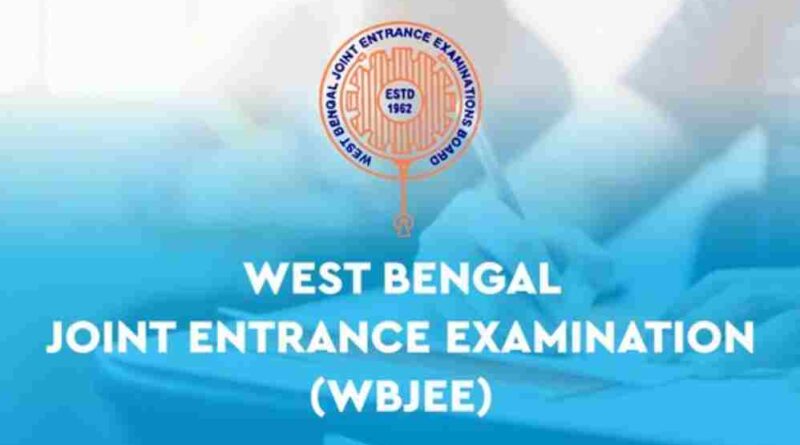WBJEE 2025 Results Out: Spotlight on West Bengal’s Top Engineering Colleges as per NIRF Rankings
With the release of the West Bengal Joint Entrance Examination (WBJEE) 2025 results, thousands of students are now at the pivotal moment of choosing the right engineering college. But with a wide variety of institutions available across the state, the decision is more complex than ever. To guide this process, many are turning to the National Institutional Ranking Framework (NIRF) — a tool that provides a comprehensive look at the performance of colleges nationwide.
This year, NIRF rankings once again highlight West Bengal’s growing strength in engineering education, offering aspirants a clear glimpse into which institutions are standing out — not only within the state, but on a national level.
The Crown Jewel: IIT Kharagpur
When it comes to engineering education in West Bengal, one name towers above all: the Indian Institute of Technology, Kharagpur. It continues to maintain its place among the top five engineering institutes in the country.
With a legacy that dates back to 1951, IIT Kharagpur is more than just a college — it’s an institution that has shaped India’s technological backbone. Known for its rigorous academics, groundbreaking research, and global reputation, IIT Kharagpur is the dream destination for many engineering aspirants. Though admissions to IITs occur through the JEE Advanced route, its presence in West Bengal uplifts the state’s reputation in the STEM field.
Jadavpur University: Academic Excellence with Accessibility
For those who crack the WBJEE with strong scores, Jadavpur University stands as a top contender. Year after year, it is ranked among the top 15 engineering institutes in India.
What makes Jadavpur University special is its unique combination of academic excellence and affordability. With government funding and a reputation for deep-rooted academic values, JU produces top-tier engineers while remaining accessible to students from diverse socio-economic backgrounds. The campus culture, focus on research, and legacy of excellence make it a preferred choice for top WBJEE rankers.
NIT Durgapur: National Presence, State Pride
The National Institute of Technology, Durgapur, is another name that consistently features in the top 50 of national rankings. As one of the first eight Regional Engineering Colleges established in India, NIT Durgapur has maintained its standing as a hub of innovation and technical knowledge.
Admissions here are done through the JEE Main examination, but its presence in West Bengal provides a strong alternative for those looking at nationally recognized education. With consistent placement records and growing industry collaborations, NIT Durgapur is gaining traction among students seeking quality education coupled with job-ready training.
IIEST Shibpur: Engineering Meets Heritage
The Indian Institute of Engineering Science and Technology (IIEST), Shibpur, formerly known as Bengal Engineering College, is one of the oldest engineering institutions in India. Despite its long history, IIEST is anything but outdated.
In recent years, the institute has revitalized its academic programs, emphasized research output, and created a more dynamic campus ecosystem. Its steady climb in national rankings reflects this evolution. Students opting for IIEST often praise its balanced approach — blending academic depth with infrastructural growth and student support systems.
Private and Emerging Institutions: A New Era
While legacy institutions dominate the top of the list, several private and emerging engineering colleges in West Bengal are making their presence felt. Colleges such as Heritage Institute of Technology, Techno India University, and Haldia Institute of Technology have been steadily improving their infrastructure, faculty strength, and industry linkages.
Although these colleges may not always feature prominently in national rankings, their efforts toward modernization and student-centric learning are gaining attention. Many of them offer robust placement cells, global exchange programs, and state-of-the-art laboratories, attracting a sizable number of WBJEE aspirants.
The Bigger Picture: What These Rankings Mean for Students
The NIRF rankings are more than just numbers. For students and parents, they provide a benchmark — a way to assess institutional credibility beyond promotional material and word-of-mouth.
Rankings consider various metrics: teaching quality, research output, graduation outcomes, peer perception, and inclusivity. For an engineering aspirant, this means the opportunity to align personal career goals with an institution’s strengths — whether it be cutting-edge innovation, academic rigor, or industry collaboration.
Counseling Season: The Pressure is On
With the WBJEE results now released, counseling and seat allocation are the next steps in the admission process. Students with top ranks are expected to compete for seats in Jadavpur University and other highly-ranked state institutions, while others will consider the newer colleges that have shown promise in recent years.
Parents and guardians are also playing a vital role, helping students weigh factors like tuition fees, hostel facilities, course specializations, placement history, and even campus culture.
Career counselors advise students to go beyond rankings and brochures. A college’s compatibility with the student’s learning style, ambitions, and values can significantly impact their college experience and future success.
Looking Ahead: Engineering as a Transformative Journey
For many in West Bengal, engineering is not just a profession — it’s a pathway to economic and social mobility. As the education landscape evolves, and institutions strive to meet global standards, students today have more options and better tools to make informed decisions.
The message is clear: West Bengal is home to some of the country’s most prestigious and promising engineering institutions. And with the 2025 WBJEE results now in hand, the journey for the next generation of engineers has officially begun.
Disclaimer
The information and content shared on digitalgithub.com — including articles, blogs, news, guides, and other resources — is intended for general informational and educational purposes only. We do not guarantee the completeness, reliability, or suitability of any information. Always seek the guidance of a qualified professional before making decisions based on the information you read. Use this site at your own risk.

